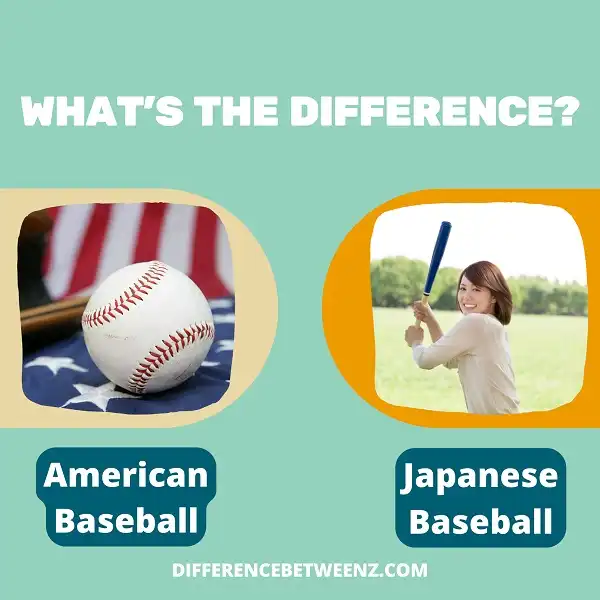Most people know that baseball is a popular sport in the United States, but what many people don’t know is that baseball is also a very popular sport in Japan. Both countries have their own distinct way of playing the game, which can be seen as a microcosm of the two cultures themselves. In this blog post, we will take a closer look at the differences between American and Japanese baseball. We will start by discussing how baseball originated in each country and then move on to talking about the different rules that are used in each country. Finally, we will discuss some of the cultural differences between American and Japanese baseball fans.
What is American Baseball?
American baseball is a bat-and-ball sport played between two teams of nine players each. The aim of the game is to score runs by hitting a ball thrown by the pitcher with a bat and then running around a set of four bases. The game typically lasts nine innings, during which each team has a chance to bat and score runs. Baseball originated in the United States in the 19th century and is now one of the most popular sports in the country. Professional baseball leagues are also present in several other countries, including Japan, Canada, and Puerto Rico.
What is Japanese Baseball?
Japanese baseball is a form of sport that is popular in the country of Japan. It has been played there for over a hundred years and is one of the country’s most popular sports. The game is played on a diamond-shaped field with bases located at the corners. There are typically two teams of nine players each, and the teams take turns batting and fielding. The objective of the game is to score runs by hitting the ball and then running around all four bases before the defense can get you out. Japanese baseball has some similarities to American baseball, but there are also some important differences. For example, Japanese teams typically place a greater emphasis on speed and small ball strategies, such as bunting and base stealing. As a result, Japanese games tend to be quicker and lower-scoring than their American counterparts.
Difference between American and Japanese Baseball
When it comes to baseball, there are a few key differences between American and Japanese styles of play. One of the most notable differences in the size of the field. In America, baseball fields are typically much larger than their Japanese counterparts. This is due in part to the fact that American players are generally bigger and faster than their Japanese counterparts. As a result, they need more space to run and field the ball. Another key difference is the amount of time each game lasts. In America, baseball games are typically much shorter than in Japan. This is due to the fact that American players tend to be more aggressive and focused on offense, while Japanese players place a greater emphasis on defense. As a result, American games tend to be more exciting and high-scoring, while Japanese games tend to be more methodical and low-scoring. While there are some key differences between American and Japanese baseball, both styles of play have their own unique charms.
Conclusion
The Japanese baseball league is known for its strict rules and discipline, while the American baseball league is known for being more relaxed. There are different reasons why each country has adopted these distinct styles of play. In America, baseball was born out of a need to keep young people active and out of trouble; it was seen as a way to teach teamwork and important life skills. Japan’s love affair with the game began in 1872 when an American teacher introduced the sport to students at Keio University. Baseball quickly became popular throughout the country, and the professional league was formed in 1936. While both countries have their own unique take on baseball, they are still able to compete against each other in international tournaments.


